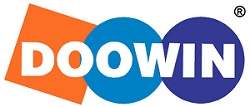According to OSHA requirements, all active cranes must be tested yearly as frequent use wears safety-critical crane components.
Worn parts may result in the crane becoming inoperable or even failing dangerously, putting personnel at risk. By conducting frequent crane inspections, you can discover potential issues and deal with them before they arise.
Stackable steel or cast iron crane test weights
The tradition crane test weights are steel or cast-iron weights. These test weights are stackable. It is very suitable for the proof load testing cranes, winches and beams in low headroom and confined space applications, where the use of water-filled test weights would not be possible.
The common individual steel test weights range in size from several kgs up to 10ton or bigger, with the larger weights configured to enable stacking on lift stands.
The advantages of steel test weights include:
- Low working height
- Can lay down the test weights
- Proof load tested carrier baskets
- Lift stands
- Compact and movable, even using rollers
- Liftable using standard rigging hardware
- Smaller test weights for hand-carrying
In contrast, its disadvantages are very obvious too. Because of heavyweight, its transportation cost is very high. And it is very hard to test the rig cranes. The test weights cannot be added slowly. So the problem cannot be found timely.
Water-filled weight bag load test weights
Water-filled weight bags are simple and safe crane test weights designed to provide proof load testing instead of traditional solid load test weights.
Crane load test water bags are designed for proof load testing the lifting equipment and structures.
These weights are suitable for:
- Cranes
- Beams
- Lifeboat davits
- Derricks
- Overhead cranes
- Such as crane load testing, beam load test, lifeboat davit load test, derrick load testing, overhead crane load test.
The water weight bags have load cells weighing approximately 2% of its rated load weight. This feature keeps freight costs, storage space, floor loading and manpower to a minimum.
The use of water bags for our crane and hoist load testing services is recognised as a safe technique for slowly applying the test load. This means that potential problems can be identified long before the maximum load is reached. In addition, load water can be drained without having to lower the test weight. This would be helpful in situations where the hoisting system or brakes were compromised in some way.
Concrete load test weights
Concrete load test weights are similar to the steel test weights as they are also stackable, though less commonly used than steel weights as they are easy to lose due to their lower density. As well as this, its volume is bigger than the steel test weights, making them less easy to operate. In other regards, the concrete load test weights have similar disadvantages to steel. However, concrete load tests are significantly cheaper than steel or cast-iron.
Sandbag load test weights
Sometimes sandbags can also be used as crane test weights, although their most common application is in bridge load testing.
The workers fill the woven bag or jumbo bag using sand, then stack them one by one onto the lifting stands. The weight of each sandbag is different and should be weighed ahead of time to determine the total weight.
The greatest disadvantage of this sandbag is the cumbersome effort involved in their use.
Water tank load test weights
Water tanks are often used by shipyard or offshore companies for cranes with a capacity of over 1,000t. Some large capacity cranes also lack the height to use water bags or other test weights.
They are often cubed in shape and made by welding high strength steel plates together. Several supporting steel beams are added to their interiors, then lifting eyes are welded on.
Due to their large size, water tanks can be difficult to store and use. This and their high cost make water tanks a seldom-used option for load test weights and as a result, they are not commoditised. They are usually welded by a special processing plant commissioned by the user.
In general, water-filled weight bags and steel load test weights are the two most common types of load test weights.

